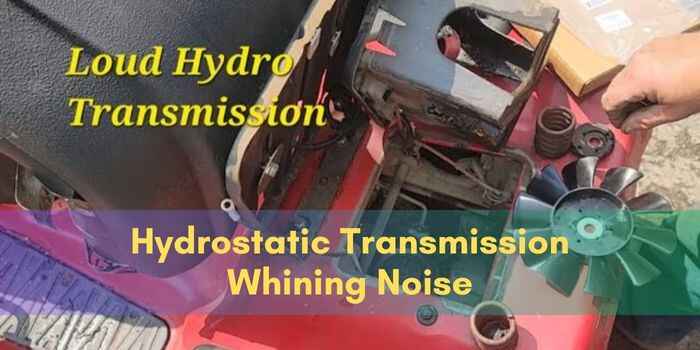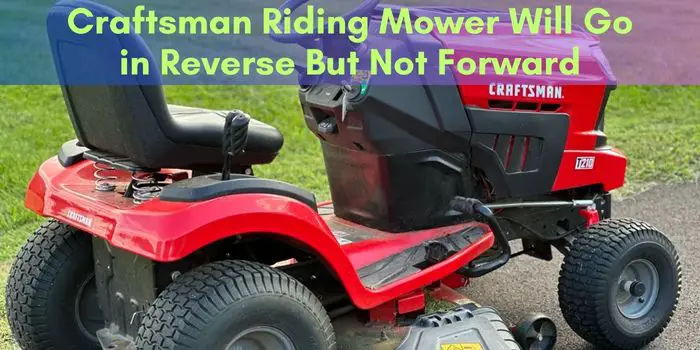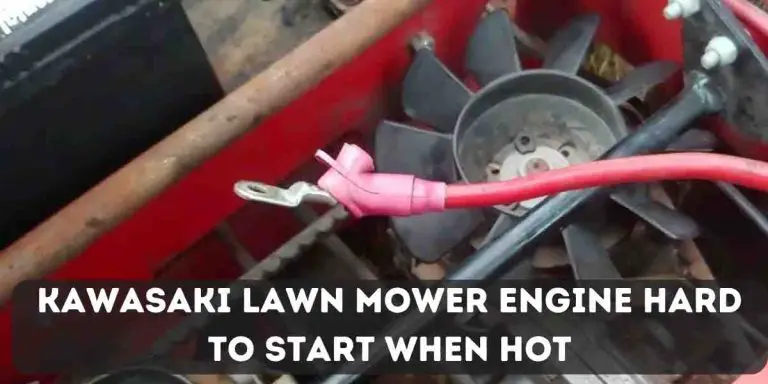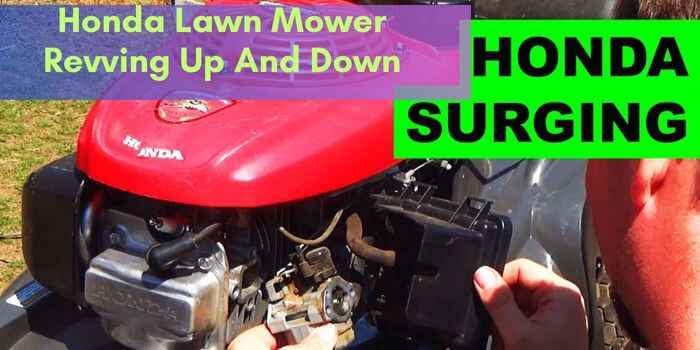Cub Cadet Rt65 Problems: Troubleshooting Tips for Optimal Performance
If you’re experiencing problems with your Cub Cadet RT65, here’s a concise solution. Having trouble with your Cub Cadet RT65?
Fear not, as we’ve got you covered! We will outline some common issues that arise with the Cub Cadet RT65, along with their possible solutions. Whether you’re dealing with starting difficulties, engine stalling, or fuel leaks, we’ve got the tips and tricks to help you troubleshoot and resolve these problems effectively.
So, read on to find out how you can get your Cub Cadet RT65 up and running smoothly in no time!
Common Issues With The Cub Cadet Rt65 Tiller
The Cub Cadet Rt65 Tiller is a popular choice for garden enthusiasts looking to cultivate their soil effectively. However, like any machine, it is not without its share of common issues that users may encounter. Understanding these issues can help you troubleshoot and resolve problems quickly, ensuring that your tiller performs optimally. In this article, we will discuss the most common problems associated with the Cub Cadet Rt65 Tiller and provide solutions to help you overcome them.
Engine Struggles to Start
One of the most frustrating issues you may face with your Cub Cadet Rt65 Tiller is when the engine struggles to start. This can significantly hinder your gardening progress and leave you feeling frustrated. There are several potential reasons behind this problem:
- The fuel tank may be empty or contain old fuel. Ensure that the fuel tank is properly filled with fresh gasoline to facilitate easy starting.
- Check the spark plug for any signs of wear or damage. A faulty spark plug can prevent the engine from starting. Replace it if necessary.
- Inspect the air filter and clean or replace it if it is dirty or clogged. A clean air filter promotes proper air intake and combustion.
- Verify that the choke is set to the correct position. The choke helps provide the right fuel-to-air mixture during the starting process.
By addressing these potential causes, you can often resolve the engine starting issues and get back to tilling your garden efficiently.
Poor Performance in Wet Soil Conditions
Another issue that you may encounter with the Cub Cadet Rt65 Tiller is poor performance in wet soil conditions. When the soil is excessively damp or waterlogged, the tiller’s performance can be compromised. Here are a few factors to consider when facing this problem:
- Inspect the tines for any signs of damage or wear. Dull or damaged tines cannot effectively penetrate wet soil and may need sharpening or replacement.
- Adjust the depth of the tiller. Shallow tilling may be more suitable in wet conditions to prevent the tiller from getting bogged down.
- Consider waiting for the soil to dry out slightly before tilling. Trying to till excessively wet soil can strain the tiller’s engine and lead to poor performance.
It’s important to note that while the Cub Cadet Rt65 Tiller is designed to tackle various soil conditions, extreme wetness can still pose a challenge. By following these tips, you can enhance its performance even in less ideal soil conditions.
Tines Not Engaging Properly
If you find that the tines of your Cub Cadet Rt65 Tiller are not engaging properly, it can significantly hinder the tiller’s ability to break up the soil effectively. Here are some possible causes and solutions:
- Check the drive belt tension. An overly loose or worn-out drive belt can prevent the tines from engaging properly. Adjust or replace the belt as necessary.
- Inspect the engagement cable for any signs of damage or misalignment. Ensure that it is correctly connected and functioning smoothly.
- Examine the engagement lever or handle for any issues that may hinder the proper engagement of the tines. Lubricate or repair as needed.
By addressing these potential causes of tine engagement problems, you can ensure the effective operation of your Cub Cadet Rt65 Tiller and achieve the desired results in your garden.
Troubleshooting Tips For Starting Issues
Dealing with starting issues can be frustrating when it comes to your Cub Cadet Rt65. However, by following these troubleshooting tips, you can quickly identify and resolve common problems that can prevent your machine from starting.
Check the spark plug
If your Cub Cadet Rt65 is experiencing starting issues, the first component you should inspect is the spark plug. A faulty spark plug can prevent the engine from igniting and thus, make it difficult to start the equipment. Follow these steps to check the spark plug:
- Locate the spark plug, usually positioned near the engine.
- Disconnect the spark plug wire by gently pulling it off the plug.
- Remove the spark plug using a spark plug wrench or socket.
- Inspect the spark plug for any signs of wear, such as corrosion or fouling.
- If the spark plug appears damaged or dirty, replace it with a new one of the same type and heat range.
- Tighten the new spark plug to the manufacturer’s recommended torque specifications.
- Reconnect the spark plug wire, ensuring it fits snugly onto the plug.
Inspect the fuel system
In some cases, starting issues can be attributed to problems within the fuel system. To ensure that your Cub Cadet Rt65 is receiving the proper fuel supply, perform the following checks:
- Check the fuel tank to ensure it contains an adequate level of clean, fresh fuel.
- If the fuel appears old or contaminated, drain the tank and refill it with fresh fuel.
- Inspect the fuel filter for any clogs or debris that may restrict the flow of fuel. If necessary, clean or replace the fuel filter.
- Examine the fuel lines for any signs of damage or leaks. If you find any issues, promptly repair or replace the affected fuel lines.
Examine the air filter
A clogged or dirty air filter can restrict the airflow and cause starting problems for your Cub Cadet Rt65. To check and clean the air filter, follow these steps:
- Locate the air filter housing, typically positioned near the engine.
- Remove the air filter cover or housing by unscrewing the retaining screws or clips.
- Inspect the air filter for dirt, debris, or damage.
- If the air filter is dirty, gently tap it against a hard surface to remove loose dirt and debris.
- If necessary, wash the air filter with mild soap and water, or replace it with a new one.
- Ensure the air filter is completely dry before reinstalling it.
- Securely reattach the air filter cover or housing.
By systematically troubleshooting these common starting issues with your Cub Cadet Rt65, you’ll be able to pinpoint the problem and get your equipment up and running smoothly once again. Regular maintenance, including checking the spark plug, inspecting the fuel system, and examining the air filter, will help prevent starting problems from occurring in the future, ensuring your Cub Cadet Rt65 is always ready to tackle your outdoor tasks.
Troubleshooting Tips For Poor Performance In Wet Soil Conditions
One of the common problems faced by Cub Cadet RT65 owners is poor performance in wet soil conditions. It can be frustrating to experience your tiller not working at its best when you need it the most. However, there are a few troubleshooting tips that can help you improve its performance and ensure smooth operation even in wet soil conditions. In this section, we will discuss three important steps to troubleshoot poor performance: adjusting the tine depth, checking for clogs in the tine assembly, and verifying the proper adjustment of the wheels.
Adjust the Tine Depth
When working in wet soil, it is important to adjust the tine depth properly to avoid excessive strain on the tiller. The incorrect tine depth can cause the tiller to bog down or not penetrate the soil effectively. Here’s how you can adjust the tine depth:
- Refer to the owner’s manual for the recommended tine depth for wet soil conditions.
- Locate the tine depth adjustment lever or knob on your Cub Cadet RT65.
- Boldly slide the lever or turn the knob to adjust the tine depth to the recommended setting for wet soil conditions.
Check for Clogs in the Tine Assembly
Clogs in the tine assembly can significantly affect the performance of the tiller in wet soil. Here’s how you can check for and remove any clogs:
- Ensure that the tiller is turned off and the engine is cool.
- Inspect the tine assembly for any debris or clumps of soil that may be causing clogs.
- Use a brush or a small tool to carefully remove any clogs from the tines.
Verify that the Wheels are Properly Adjusted
Improper wheel adjustment can lead to poor performance and difficulty in maneuvering the tiller in wet soil. Follow these steps to ensure that the wheels are properly adjusted:
- Check both the front and rear wheels to ensure they are properly aligned and parallel to each other.
- Refer to the owner’s manual for the correct wheel adjustment settings.
- Adjust the wheels according to the manufacturer’s recommendations to ensure optimal performance.
By following these troubleshooting tips, you can overcome poor performance in wet soil conditions and ensure that your Cub Cadet RT65 tiller operates at its best. Proper adjustment of the tine depth, checking for tine assembly clogs, and verifying wheel alignment will lead to improved performance and help you complete your gardening tasks with ease.
Troubleshooting Tips For Tines Not Engaging Properly
When it comes to maintaining a well-manicured lawn, a high-quality tiller like the Cub Cadet RT65 can be an invaluable tool. However, like any mechanical device, the RT65 may sometimes experience problems, such as tines not engaging properly. This can be frustrating, but fear not! With a few troubleshooting tips, you can quickly identify the issue and get your tiller back up and running in no time.
Inspect the Drive Belt
One common cause of tines not engaging properly is a worn or loose drive belt. To evaluate the condition of the drive belt, you need to follow these steps:
- First, remove the spark plug wire to prevent any accidental starts while you work on the tiller.
- Next, locate the drive belt cover on the side of the tiller and remove it using a suitable wrench or screwdriver.
- Inspect the drive belt for any signs of wear, such as cracks, fraying, or stretching. If the belt is damaged, it may need to be replaced.
- Tension the drive belt by adjusting the tensioner pulley. This will ensure the belt is properly engaged and can transfer power to the tines.
Evaluate the Engagement Cable
The engagement cable is another component that can affect the tines’ engagement. Here’s what you need to do:
- Locate the engagement cable near the handle of the tiller.
- Check for any kinks or damage along the length of the cable. If there are any issues, the cable may need to be replaced.
- Verify that the engagement cable is properly adjusted. It should have enough tension to engage the tines when the handle is squeezed, but not so much that it causes premature wear or difficulty in disengaging.
Examine the Tine Clutch
The tine clutch is responsible for engaging and disengaging the tines when necessary. To ensure it is functioning correctly:
- Remove any debris or dirt buildup around the tine clutch area.
- Inspect the clutch assembly for any signs of damage or wear, such as broken springs or worn-out pads.
- Adjust the tine clutch if necessary, following the manufacturer’s instructions, to make sure it properly engages and disengages the tines.
By following these troubleshooting tips, you should be able to identify and resolve any issues with the tines not engaging properly on your Cub Cadet RT65 tiller. Remember to always refer to the manufacturer’s manual for specific instructions and maintenance guidelines to ensure the longevity and optimal performance of your tiller.
Maintenance Tips For Optimal Cub Cadet Rt65 Performance
Regular maintenance is essential to ensure that your Cub Cadet Rt65 runs smoothly and performs at its best. By following these maintenance tips, you can keep your machine in top condition and avoid common problems that may arise during its operation.
Regularly clean the air filter
The air filter plays a crucial role in preventing dirt, debris, and other particles from entering the engine. Over time, the filter can become clogged, affecting the engine’s performance and fuel efficiency. To prevent this, it is important to regularly clean the air filter.
To clean the air filter:
- Remove the filter cover by unscrewing the screws.
- Take out the filter and clean it using compressed air or by tapping it gently to remove the dust.
- Inspect the filter for any signs of damage or wear. If necessary, replace the filter with a new one.
- Reinstall the filter and secure the filter cover tightly.
Change the engine oil
Regularly changing the engine oil is vital to maintain optimal performance and extend the lifespan of your Cub Cadet Rt65. Over time, the oil can become contaminated and lose its lubricating properties. Therefore, it is recommended to change the engine oil at regular intervals or as advised by your manufacturer.
To change the engine oil:
- Start by warming up the engine to allow the oil to flow more easily.
- Place a drain pan underneath the drain plug.
- Remove the drain plug and let the old oil drain completely.
- Replace the drain plug and tighten it securely.
- Remove the oil fill cap and pour the recommended amount of fresh oil into the engine.
- Check the oil level using the dipstick and add more oil if needed.
- Replace the oil fill cap and ensure it is tightly closed.
Lubricate all moving parts
Proper lubrication is essential to reduce friction and ensure smooth operation of all moving parts in your Cub Cadet Rt65. Applying lubricant regularly can help prevent excessive wear and extend the life of your machine.
To lubricate all moving parts:
- Refer to the manufacturer’s manual to identify the parts that require lubrication.
- Clean the parts thoroughly to remove any dirt or debris.
- Apply the appropriate lubricant to the designated areas.
- Ensure that each moving part is well-coated with lubricant and operates smoothly.
By following these maintenance tips, you can ensure that your Cub Cadet Rt65 performs optimally, remains in good condition, and continues to provide reliable and efficient performance for your gardening needs.
Frequently Asked Questions For Cub Cadet Rt65 Problems
What Are The Common Problems With Cub Cadet Rt65?
The common problems with Cub Cadet RT65 include engine starting issues, belt slipping, and throttle control problems.
How Do I Troubleshoot Engine Starting Issues Of Cub Cadet Rt65?
To troubleshoot engine starting issues of Cub Cadet RT65, check the fuel level, spark plug, and air filter. Ensure the choke is in the correct position and try using fresh fuel. If the problem persists, consult a professional for further inspection and repair.
Why Does The Belt On My Cub Cadet Rt65 Keep Slipping?
The belt on your Cub Cadet RT65 may keep slipping due to improper tension, worn-out pulleys or belt, or debris accumulation. Check the tension, look for any damaged components, and clean the pulleys to resolve this issue.
How Can I Fix Throttle Control Problems With My Cub Cadet Rt65?
To fix throttle control problems with your Cub Cadet RT65, start by inspecting the throttle cable for any damage or looseness. Clean or replace the cable if necessary. Adjust the throttle control lever to ensure it is properly aligned with the designated notches.
If the issue persists, seek professional assistance.
Conclusion
Overall, it is clear that the Cub Cadet RT65 is a powerful and efficient machine that can tackle various landscaping tasks. However, it is not without its share of problems. From issues with the throttle to frequent belt slipping, these problems can significantly impact the performance and reliability of the machine.
It is essential to be aware of these problems and take necessary precautions to mitigate them to ensure a smooth and hassle-free experience with the Cub Cadet RT65.




